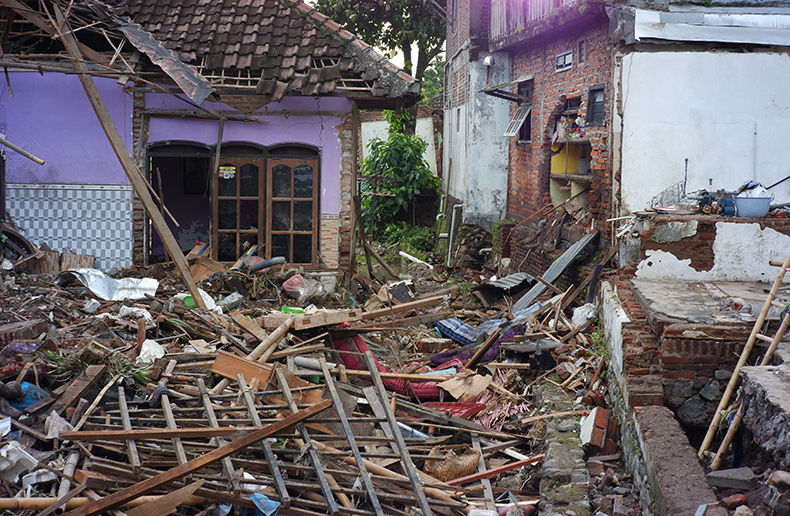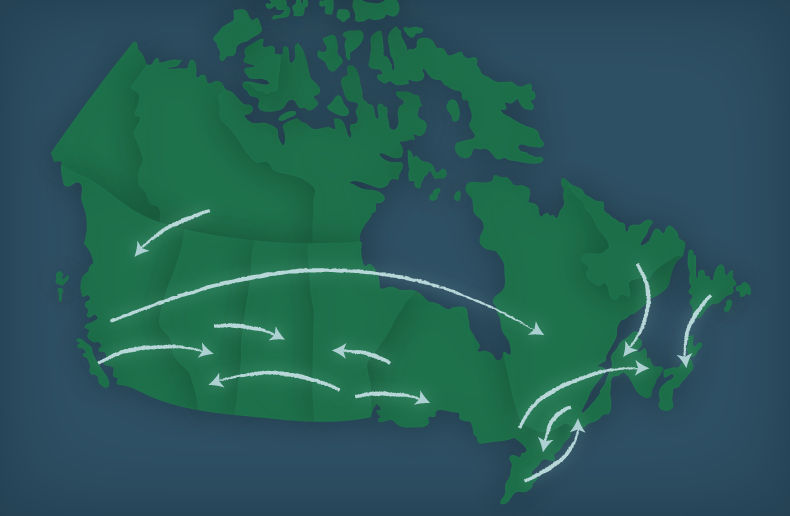Numerous communities in Canada are in need of affordable housing, but current rules mean that many of these places are located in zones at high risk of disasters associated with extreme weather events.
Released on Feb. 6, the problem addressed in the Canadian Climate Institute report, Close to home: How to build more housing in a changing climate, is summed up by the title of the introduction, “The most affordable home is the one you don’t have to keep rebuilding.”
According to the Canada Mortgage and Housing Corporation (CMHC), if Canada is to meet government targets for affordable housing, some 5.8 million homes will need to be built by 2030. This represents a 35% increase in the country's 16 million housing units.
The Institute's analysis shows that hundreds of thousands of these homes could be built in areas highly vulnerable to floods or wildfires. As a result, the report's authors urge that governments at all levels “steer housing investment toward safer areas as they encourage accelerated housing construction.”
If planning policies remain the same across the provinces and territories, warns the report, many new homes will be built in areas prone to flooding or wildfires. “Most of this new risk is associated with a relatively small number of homes that will be built in the most hazardous places,” points out the Institute.
Wildfire risk models used in the report were developed by Co-operators (a Canadian financial services co-operative); flood risk modelling was done through Fathom Global and SSG (Sustainability Solutions Group) analyzed future housing risk.
Five conclusions
First, by 2030, more than 540,000 homes could be built in flood-prone areas, and over 220,000 in municipalities at high risk of wildfires. In the worst case scenario, annual losses for new housing could exceed $3 billion per year.
Second, there is a link between the stringency of land-use policies and the level of risk incurred by the inhabitants of these new homes. Some municipalities under pressure to put the immediate need for housing ahead of safety may approve projects in high-risk areas. The most stringent provinces in terms of development, such as Ontario and Saskatchewan, have relatively low risks for their housing stock, and are therefore examples to follow, according to the Institute.
Third, by redirecting just 3% of the housing to be built by 2030, or 150,000 units, to safer land, the Institute estimates that the risk of flooding could be reduced by almost 80%.
Fourth, federal and provincial programs aiming to increase housing supply often overlook climate hazards. Infrastructure funding programs that fail to consider new development location also are a key factor in enabling housing construction in hazard zones. Additionally, “Many disaster assistance programs create a moral hazard, leading to a reliance on post-disaster recovery, rather than proactive risk avoidance,” states the report.
Fifth, housing decisions are made in the absence of information on climate risks. Flood zone maps are outdated, and fire risk modeling is incomplete. Real estate transactions take place in the absence of this information. As a result, many people continue to build, buy or rent in high-risk areas.
Recommendations
The Institute's recommendations are designed to remedy these shortcomings. Funding rules for government programs need to be broadened to better assess climate risk.
Building regulations must include national standards that increase the resilience of buildings against climatic hazards, in addition to limiting new housing in vulnerable areas. Some structural protections may not be sufficient as climate change intensifies risks.
For populated areas adjacent to more fire-prone forested territories, the Institute suggests that mitigation measures such as FireSmart practices should be required by governments, and local initiatives should include complementary measures.
Disaster assistance programs should aim to discourage construction in at-risk zones, by making new homes built in designated high-hazard zones ineligible for publicly funded disaster compensation. This would signal “to homeowners and developers that these areas are unsuitable for safe housing.” The future federal public flood insurance program should limit coverage to homes built before the program’s implementation, the report adds.
Governments should give free access to accurate, up-to-date maps of flood and wildfire hazards, suggests the Institute. Real estate sector regulators should include mandatory reporting of climate hazard risks. Insurance regulators should also require insurers to provide property-specific risk assessments to prospective buyers, ensuring transparency about potential risks, states the report.
Finally, the federal government should support those First Nations that have acute housing needs and limited access to safe land. The Institute advocates helping these communities with land use planning that integrates traditional knowledge of climate hazards, and in building housing that can withstand future climate impacts.
The Institute also commissioned a companion report, Indigenous Housing and Climate Resilience, by Shared Value Solutions to identify unique challenges faced by Indigenous Nations in developing climate-resilient homes.
The impact of wildfires
Damage to new homes caused by catastrophic wildfires could far outstrip average annual losses, according to the Institute's analysis based on modeling provided by Co-operators.
Projected increases in wildfire losses could push damages up by 155%, equivalent to more than $1.1 billion in additional average annual losses.




